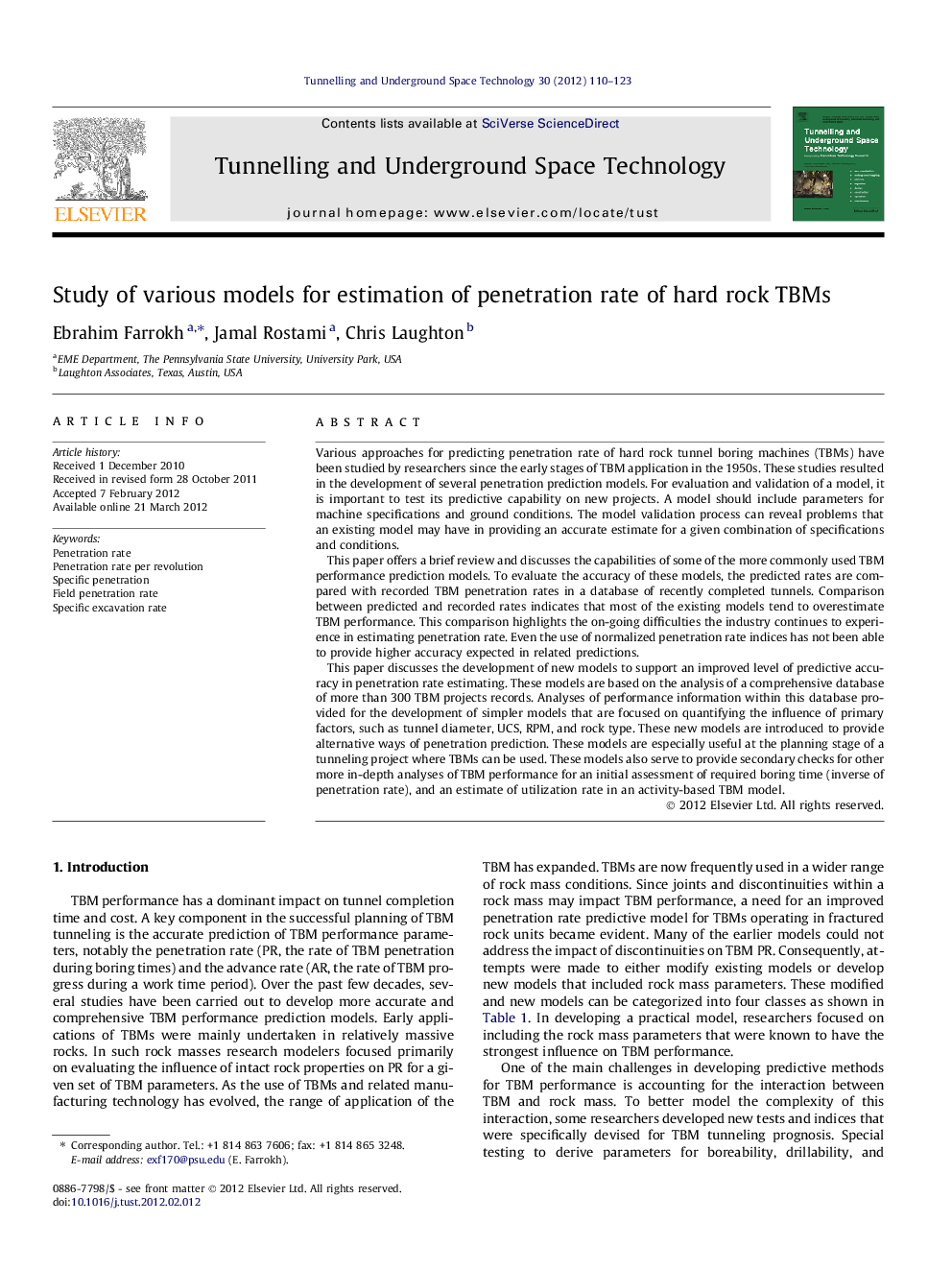| Article ID | Journal | Published Year | Pages | File Type |
|---|---|---|---|---|
| 311922 | Tunnelling and Underground Space Technology | 2012 | 14 Pages |
Various approaches for predicting penetration rate of hard rock tunnel boring machines (TBMs) have been studied by researchers since the early stages of TBM application in the 1950s. These studies resulted in the development of several penetration prediction models. For evaluation and validation of a model, it is important to test its predictive capability on new projects. A model should include parameters for machine specifications and ground conditions. The model validation process can reveal problems that an existing model may have in providing an accurate estimate for a given combination of specifications and conditions.This paper offers a brief review and discusses the capabilities of some of the more commonly used TBM performance prediction models. To evaluate the accuracy of these models, the predicted rates are compared with recorded TBM penetration rates in a database of recently completed tunnels. Comparison between predicted and recorded rates indicates that most of the existing models tend to overestimate TBM performance. This comparison highlights the on-going difficulties the industry continues to experience in estimating penetration rate. Even the use of normalized penetration rate indices has not been able to provide higher accuracy expected in related predictions.This paper discusses the development of new models to support an improved level of predictive accuracy in penetration rate estimating. These models are based on the analysis of a comprehensive database of more than 300 TBM projects records. Analyses of performance information within this database provided for the development of simpler models that are focused on quantifying the influence of primary factors, such as tunnel diameter, UCS, RPM, and rock type. These new models are introduced to provide alternative ways of penetration prediction. These models are especially useful at the planning stage of a tunneling project where TBMs can be used. These models also serve to provide secondary checks for other more in-depth analyses of TBM performance for an initial assessment of required boring time (inverse of penetration rate), and an estimate of utilization rate in an activity-based TBM model.
► Previous models cannot offer accurate estimates for new projects. ► Proposed model offers better accuracy than previous models in predicting PR. ► Diameter, UCS, RPM, and rock type are the most influential parameters for RR.
